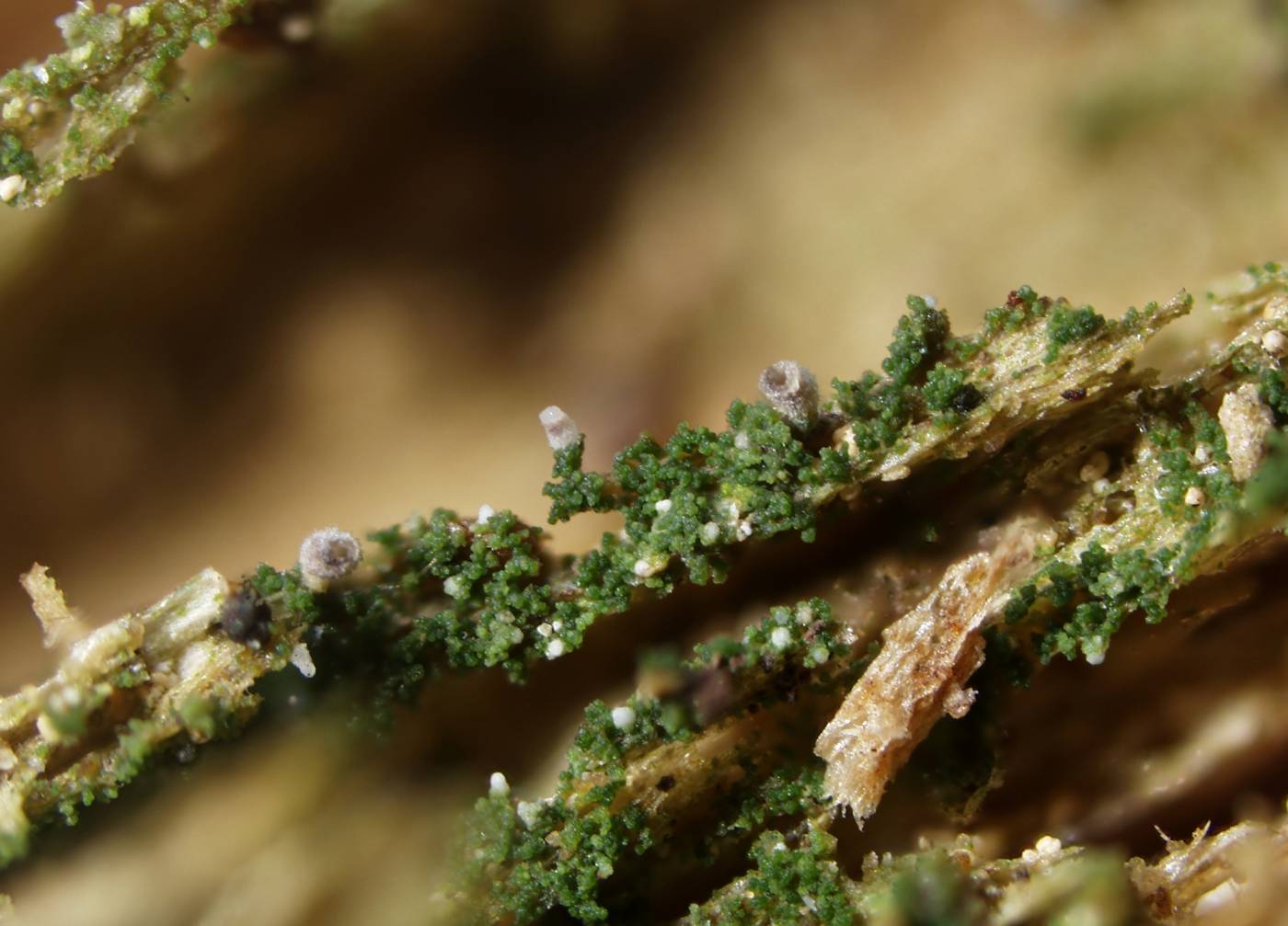A relatively rare epixylic species, known only in the characteristic anamorph stage (with stalked pycnidia covered by a pink pruina) in the Czech Republic. It usually grows on a strongly decayed wood of stumps, snags and lying trunks in humid shaded forests. The lichen typically occurs in association with other members from the M. prasina agg. (most often M. prasina s. str. or M. flavoleprosa) and with the moss Tetraphis pellucida on almost decomposed wood after the incidence of cellulose-degrading fungi (the so called brown rot). Micarea hedlundii may exceptionally pass also onto decaying bark of conifers in permanently humid microhabitats. Old growth mountain forests or afforested inverse ravines provide optimal condition for its occurrence. In the Czech Republic, the lichen has been recorded only in the Šumava Mts, Novohradské hory Mts, Beskydy Mts, České Švýcarsko National Park and Třeboň region.
Literature: Palice Z. (1999): New and noteworthy records of lichens in the Czech Republic. – Preslia 71: 289–336.
taxonomic classification:Ascomycota → Lecanoromycetes → Lecanorales → Pilocarpaceae → Micarea
Red List (Liška & Palice 2010):EN – endangered
Red List (Malíček 2023):C3 – endangered
Occurrence in the Czech Republic
All records: 29, confirmed 29. One click on a selected square displays particular record(s), including their source(s).
